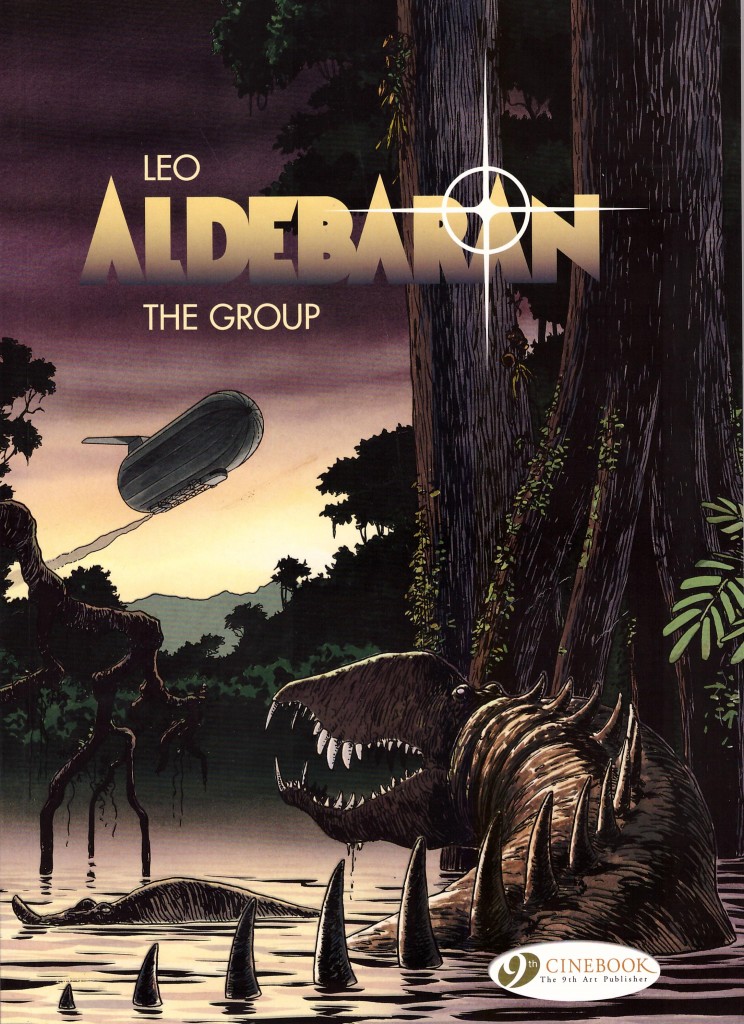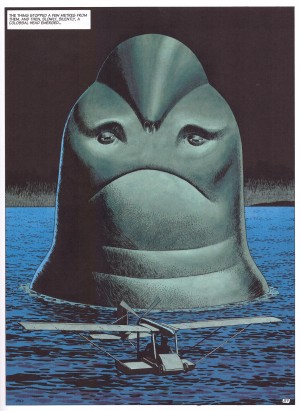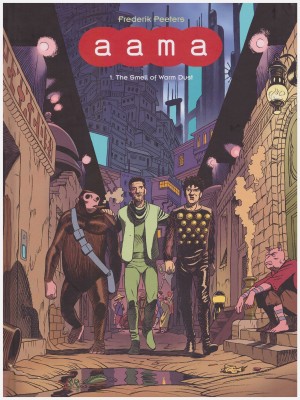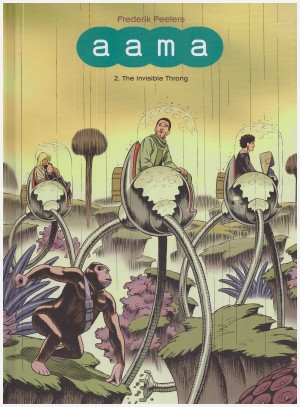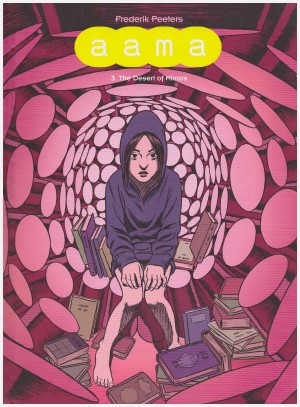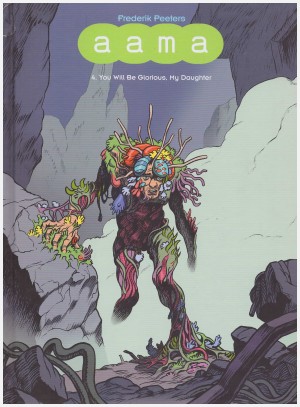Review by Karl Verhoven
The Group picks up three and half years after The Catastrophe ended. Mark Sorensen had always dreamed of seeing Aldebaran’s capital city of Anatolia, and now he can, as prisoner 47031 from the window of his jail cell. A significant factor in his ending up there was the deceit of an old trickster named Pad, who returns early here and this subsequent intervention works to Mark’s advantage.
This combines the third and fourth volumes of the original French series, and almost the entire book takes places in Anatolia, which creator Leo bases on Earth cities of the late 20th century. It’s only when he introduces some of his fantastic creatures that we’re jolted back to the realisation that we’re reading about a planet colonised by humans in the 22nd century. Despite the dangers and the adventures, a serene quality infused Aldebaran’s previous books, but with Anatolia as the setting Leo now dives headlong into the deficiencies of the governing system. He’s based elements of it on the juntas of his South American youth. The sinister representatives of the dictatorial government tolerate very little dissent. They’ve outlawed music, and people have a habit of dying mysteriously when apprehended. Women are second class citizens, and changes to laws are being considered to increase the population by forcing them to become pregnant at seventeen, while all female prisoners are impregnated. Against this background Leo perpetuates the mystery of Driss and Alexa, previously seen and continuing to investigate the strange ecological conditions of Aldebaran.
There were moments in the previous book where the phrasing appeared awkward, and these are more common in The Group due to what appears an unsympathetic translation from Luke Spear. Tortured sentences abound: “It’s just that I wanted to ask you to come with me one of these nights to the museum”, or “There must be a good trick to play, I feel it”. These can only be the result of a literal translation giving no thought to natural English speech patterns, and they’re infuriatingly distracting.
A similar stiffness affects Leo’s art with his figurework sometimes odd, but accompanied by expressive faces and complete environments, and although the flat colouring originates from before the digital era it serves the illustration well. However, Cinebook do the art no favours with their commercial prurience, clumsily adding clothing to what in European editions are naked bodies. As seen by the sample page, however, Leo’s artistic strength is his imagination, and he populates his books with fantastically imagined creatures.
The relatively slow pace of the opening section is misleading as Leo advances his overall plot considerably over the course of The Group, whose title has a resonance by the end. By then the purpose of everyone has been revealed, and Leo’s deliberately avoided a method of sustaining tension by establishing one cast member is somehow able to sense a purity of intent. He does so in the full knowledge of his disclosures being intriguing enough to guide any reader into Aldebaran‘s conclusion, found in The Creature.
